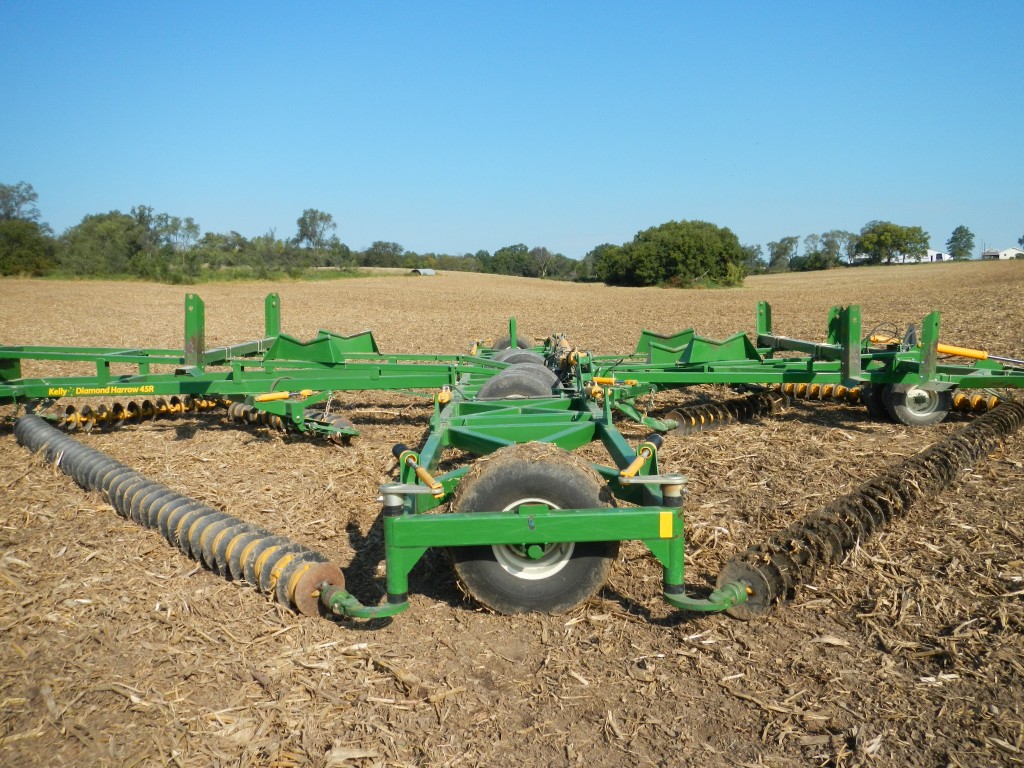Greetings, farmers of America! Are you ready to till the soil like never before? Vertical tillage is the cutting-edge technique that’s turning the agricultural world upside down with its incredible power to increase crop yields and transform soil health.
It’s the buzz on the breeze, spreading from coast to coast as farmers everywhere dig in and reap the rewards of this revolutionary method. So, don’t wait another minute to jump on board the vertical tillage train.
Let’s plant the seeds of success and uncover why this technique is a game-changer for smart farmers all over the USA!
What Is Vertical Tillage
Vertical tillage is a new way of farming that involves using special equipment to make shallow grooves or cracks in the soil without disrupting the surface too much. These grooves are usually a few inches apart and go across the planting rows. These cuts create a narrow strip of tilled soil while leaving the remaining soil undisturbed.
The goal of this approach is to minimize soil disruption and create the best possible planting environment, leading to healthier soil and more robust crop growth.
It is a farming technique that combines soil and crop residue while adding crop nutrients, all without creating horizontal compaction layers. The absence of compaction layers that restrict plant growth allows plants to grow freely and access more nutrients from the soil, leading to increased yields.
This is accomplished by practicing shallow or light tillage in a targeted seedbed zone while leaving most of the soil and crop residue undisturbed.
The goal of this approach is to minimize soil disruption and create the best possible planting environment, leading to healthier soil and more robust crop growth.
Step into the future of shallow tillage with the KELLY 12X, a groundbreaking innovation that sets a new standard!
In today’s agricultural industry, it’s crucial for producers to optimize their crop yield. Numerous studies indicate that utilizing vertical tillage techniques can offer significant benefits to producers in achieving higher crop yields.
Improved Water Absorption
To prepare for arid seasons, soils should have the capacity to absorb and hold water; otherwise, plant growth may suffer.
Even when there is adequate water, density layers formed by traditional tilling can hold back water from reaching plant roots.
This will cause water accumulation in soil layers that can drown newly sown seeds or established crops.
The utilization of a vertical tillage tool to remove compaction layers facilitates uniform water dispersion throughout the soil and efficient water storage until it is necessary.
Producers Pathway to Progress
Producers are constantly on the lookout for ways to boost efficiency, conserve resources, reduce expenses, and increase profits.
Vertical tillage is a viable solution that can deliver numerous advantages, such as the creation of a smooth and level seedbed in just one pass.
Helping producers save time and cut fuel costs. Additionally, during winter, the use of vertical tillage methods can aid in retaining soil moisture and nutrients, which can lead to increased harvest yields, translating into greater profits for the producer.
Earth-Friendly
Farmers who rely on the land for their income are motivated to adopt agricultural methods that protect our natural resources.
Vertical tillage is a beneficial strategy that helps to prevent soil erosion by evenly distributing residue throughout the topsoil, which acts as a natural anchor.
By using this practice, decomposition of the residue is also encouraged, resulting in the restoration of natural nutrients in the soil. Additionally, it facilitates improved water retention and distribution in the soil, leading to greater efficiency and better overall crop growth.
Reduced Carbon Footprint
Compared to other tillage methods, vertical tillage can help minimize soil disturbance, leading to a decrease in the release of carbon dioxide and other gasses from the soil, thus contributing to the reduction of greenhouse gas emissions.
Reduced herbicide dependence
Retaining crop residue on the soil surface through vertical tillage can form a barrier that inhibits weed growth and, therefore, minimizes the reliance on herbicides.
Prepare to witness the ultimate weed elimination with the K4 disc chain – a true force to be reckoned with!
Its razor-sharp edges swiftly pull out weeds, flipping them over and leaving them helpless on the surface. But don’t just take our word for it – farmers have experienced an incredible 90% reduction in weed density with this game-changing disc chain!
Decreased equipment degradation
This tillage is a less damaging tillage method for farming equipment, resulting in minimized equipment wear and tear and lower maintenance costs compared to other tillage methods.
Boosts crop productivity
With its ability to quicken soil warming in the spring, vertical tillage can facilitate earlier planting, leading to higher crop yields.
Enhanced Root Development
Hard soil is a common challenge associated with no-till farming, which can hinder the growth of roots. Nevertheless, vertical tillage can be a beneficial practice since it promotes an even distribution of soil, enabling crops to develop deeper roots.
By establishing deep roots, crops are better equipped to endure harsh weather and disease, making them more resilient.
Enhanced Water Regulation
Making vertical scores in the soil can help water to sink deeper into the ground without causing any damage. This allows water to reach lower layers in the soil, which is beneficial for crop growth.
This technique also helps to dry the topsoil’s uppermost layer faster, which is important for planting seeds in the best possible way.
Conclusion
To sum it up, shallow tillage has emerged as a go-to, eco-friendly approach to soil preparation. Thanks advanced tools like the KELLY 12X and its mighty K4 disc, farmers can now attain remarkable outcomes with less soil disruption, lower labor expenses, and amplified yields.
Shallow tillage represents a groundbreaking agricultural practice that holds the potential to revolutionize the industry, and we’re excited to witness where this journey take farmers in the future!


